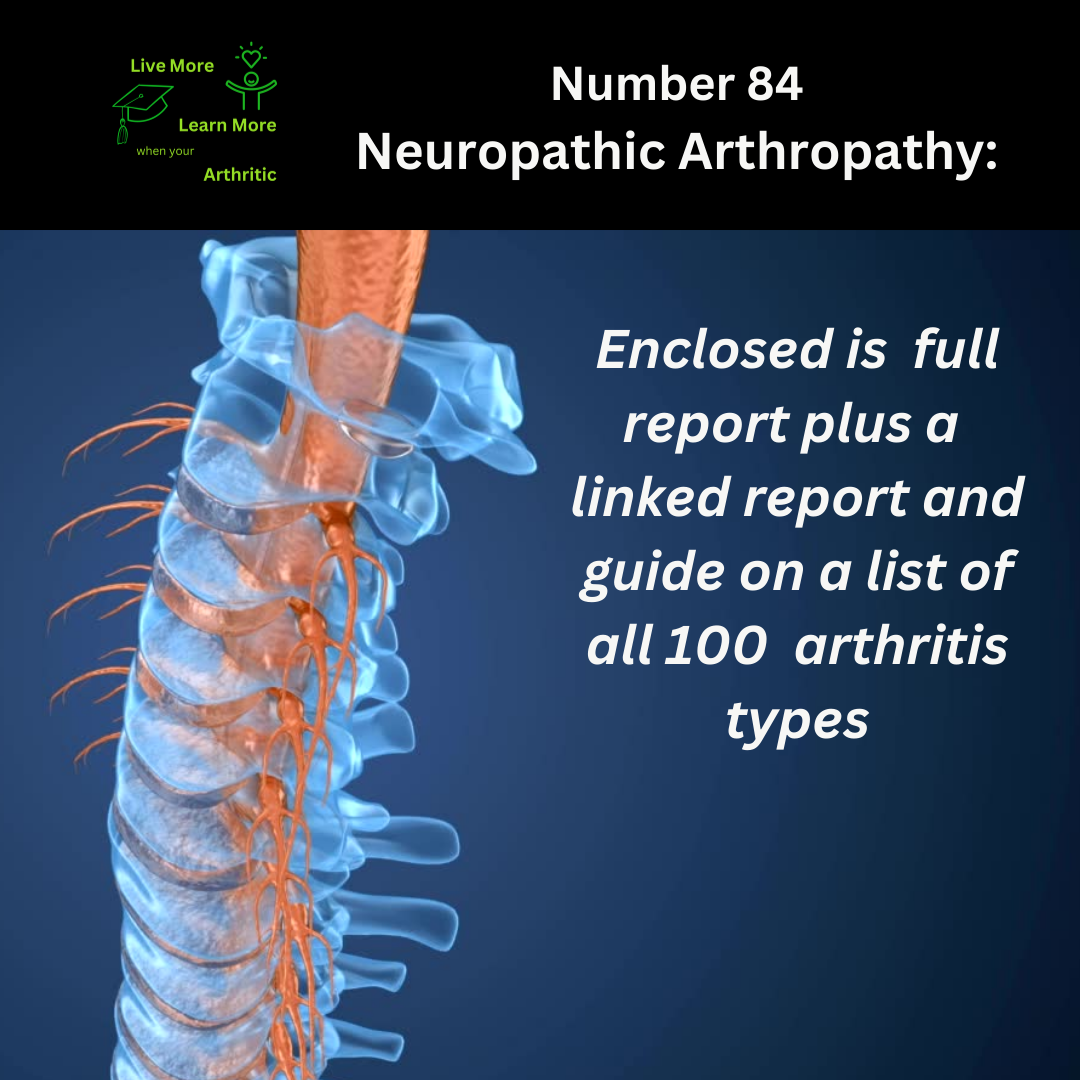
Neuropathic Arthropathy: Number 84 on the list of 100 types of Arthritis
Navigating Neuropathic Arthropathy: A Journey of Understanding
Neuropathic Arthropathy, also known as Charcot joint or Charcot arthropathy, is a condition that profoundly impacts those affected by it. This disorder, characterized by progressive degeneration of a joint due to nerve damage, presents unique challenges that require a comprehensive approach to management and care.
 Nature of Remission and Disease Description
Nature of Remission and Disease Description
Neuropathic Arthropathy does not typically go into remission in the traditional sense. The condition is chronic and progressive, leading to irreversible joint damage over time. However, early intervention and proper management can help slow down the progression and prevent further complications.
Causes, Triggers, and Symptoms
The primary cause of Neuropathic Arthropathy is nerve damage, often associated with conditions such as diabetes mellitus or other neuropathic disorders. Trauma or repetitive stress on a joint can trigger the development of Charcot joint. Common symptoms include swelling, instability, and limited range of motion in the affected joint, along with possible deformity over time.
Onset and Lifespan Impact
Neuropathic Arthropathy can occur at any age but is more commonly diagnosed in adults with long-standing diabetes or neurological conditions. The impact on lifespan varies depending on disease severity and overall health. While the condition itself may not shorten lifespan directly, complications like infections or difficulty with mobility can affect overall health outcomes.
Autoimmune Arthritis and Quality of Life
Neuropathic Arthropathy is not considered an autoimmune form of arthritis but rather a consequence of nerve damage affecting joint stability. However, proactive management strategies, including physical therapy and assistive devices, can significantly improve quality of life by optimizing joint function and reducing the risk of complications.
Complications and Associated Conditions
Complications of Neuropathic Arthropathy can be severe and may include chronic joint pain, recurrent infections due to impaired sensation, and increased risk of fractures or deformities. Individuals with this condition are also at higher risk of developing foot ulcers, which can lead to serious complications in diabetes patients.
Epidemiology and Gender Disparities
Neuropathic Arthropathy can affect both men and women, particularly those with underlying neuropathic disorders like diabetes. The condition is more prevalent in older adults due to the cumulative effects of nerve damage over time.
 Interconnected Health Concerns
Interconnected Health Concerns
Individuals with Neuropathic Arthropathy may have comorbidities such as diabetes mellitus, peripheral neuropathy, or spinal cord injury. These conditions can contribute to the development and progression of Charcot joint, underscoring the importance of comprehensive evaluation and management by a multidisciplinary healthcare team.
In conclusion, Neuropathic Arthropathy is a complex condition that requires a personalized and proactive approach to care. While the disease presents challenges, individuals can achieve a higher quality of life through early intervention, lifestyle modifications, and ongoing monitoring. Continued research and advancements in treatment strategies are essential for improving outcomes and empowering those living with Neuropathic Arthropathy to navigate their journey with resilience and hope.

